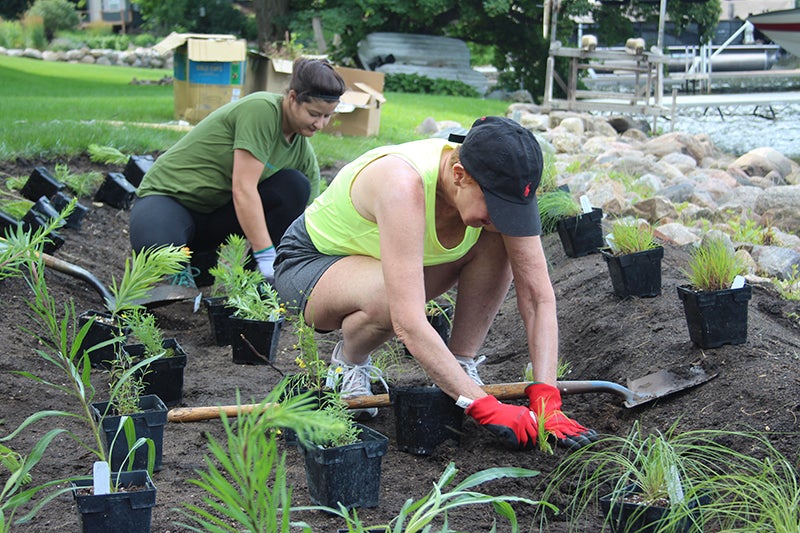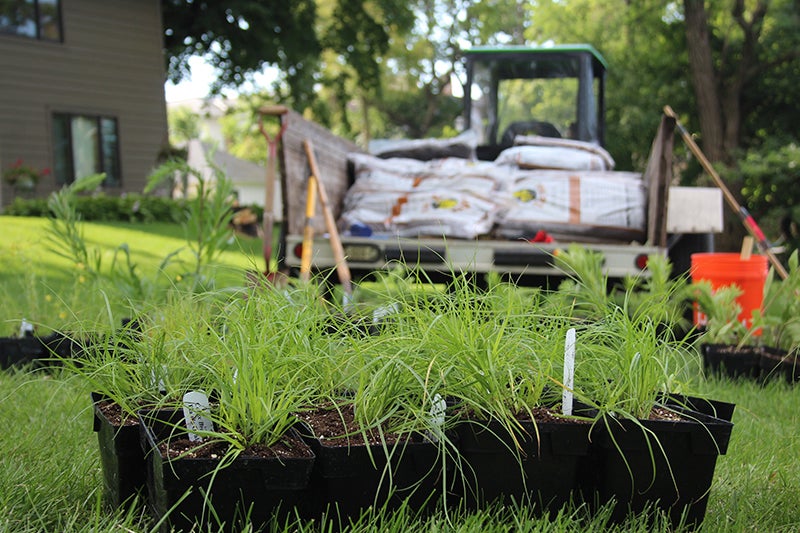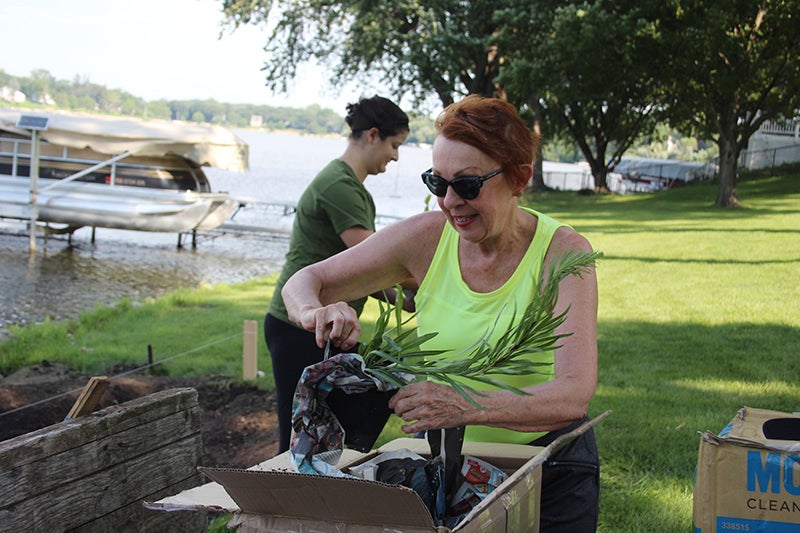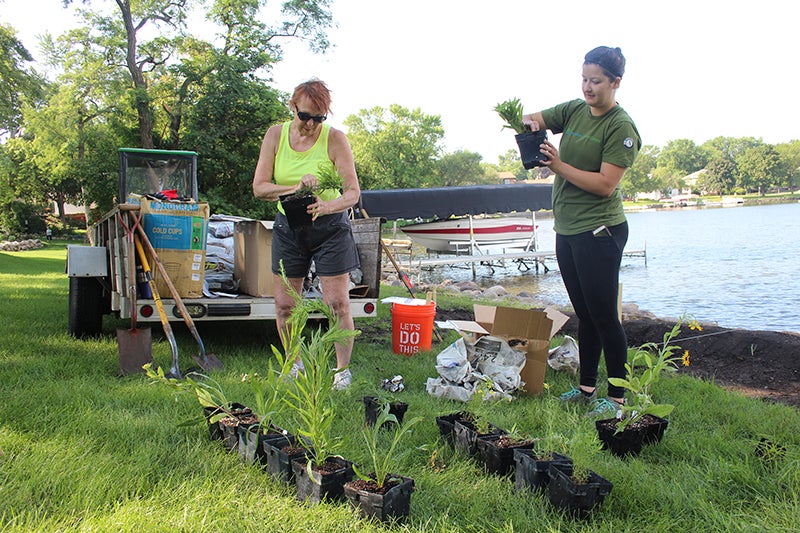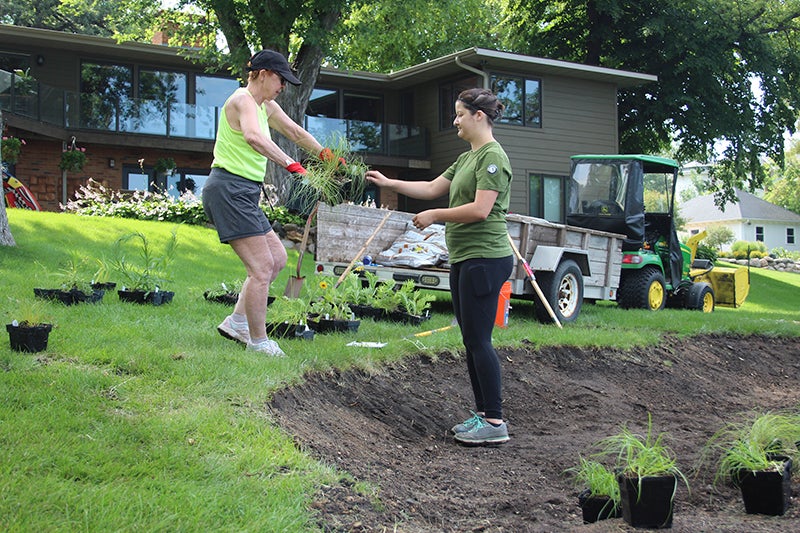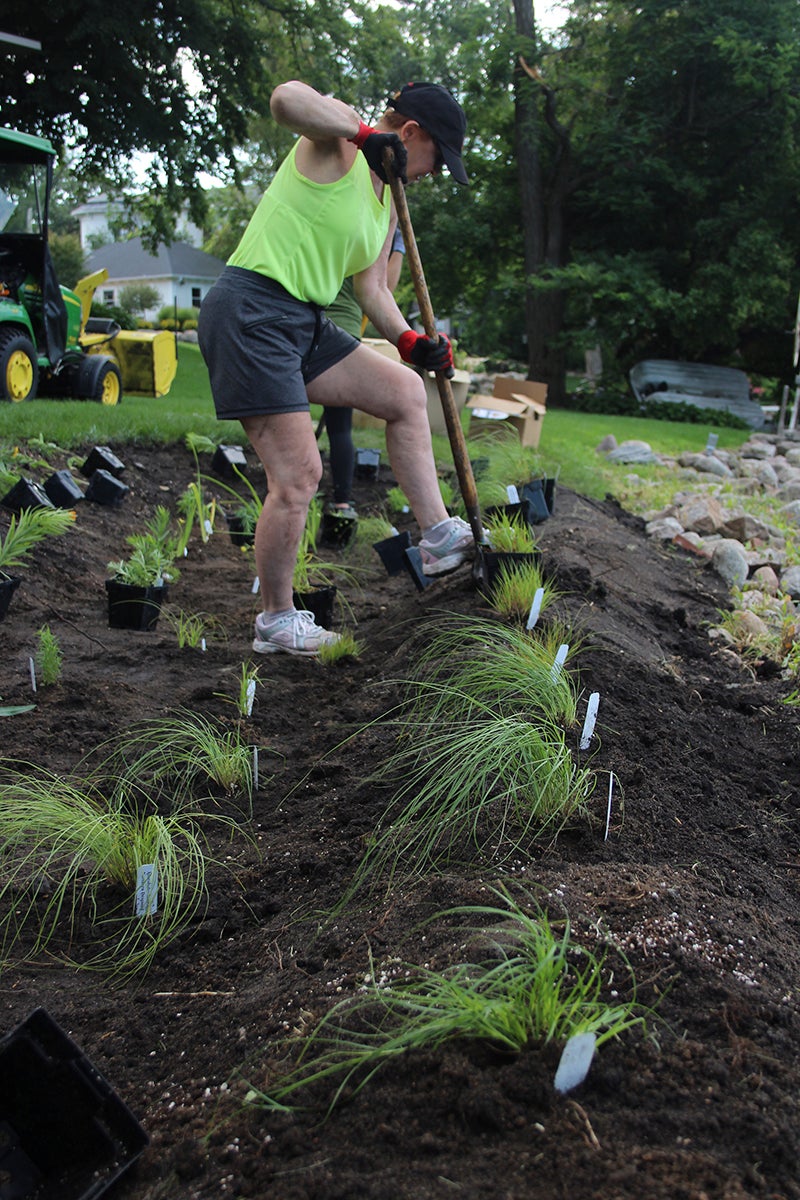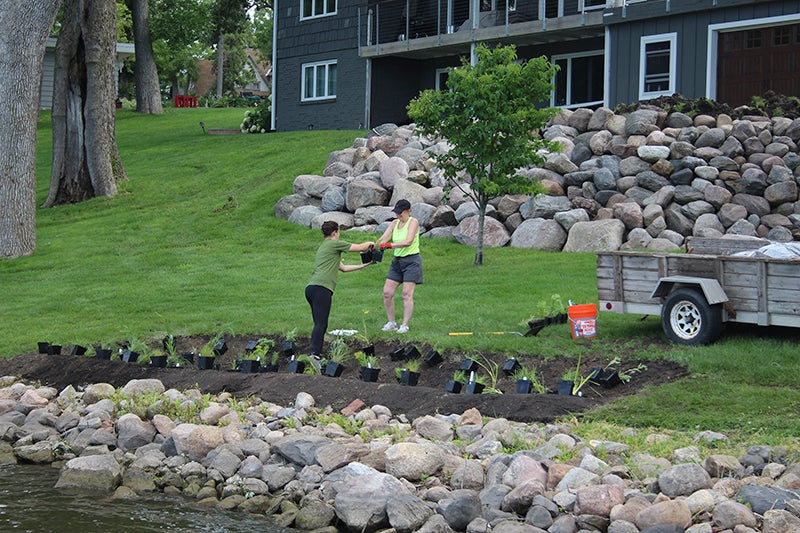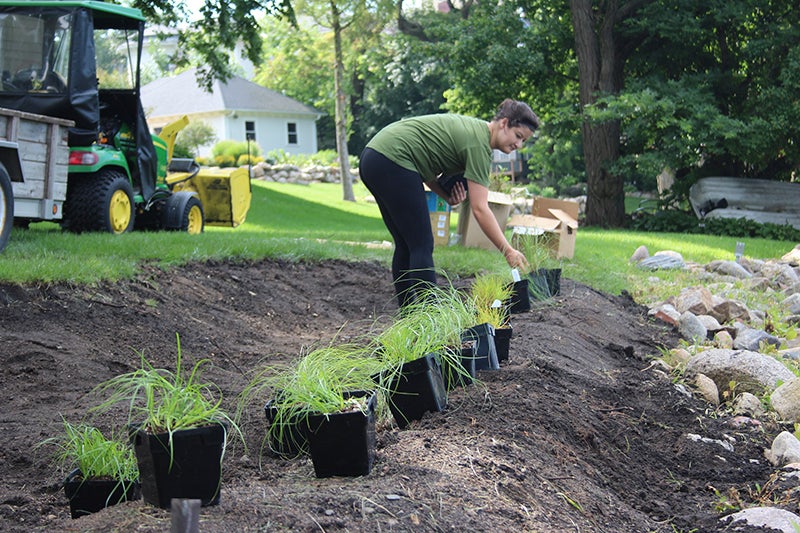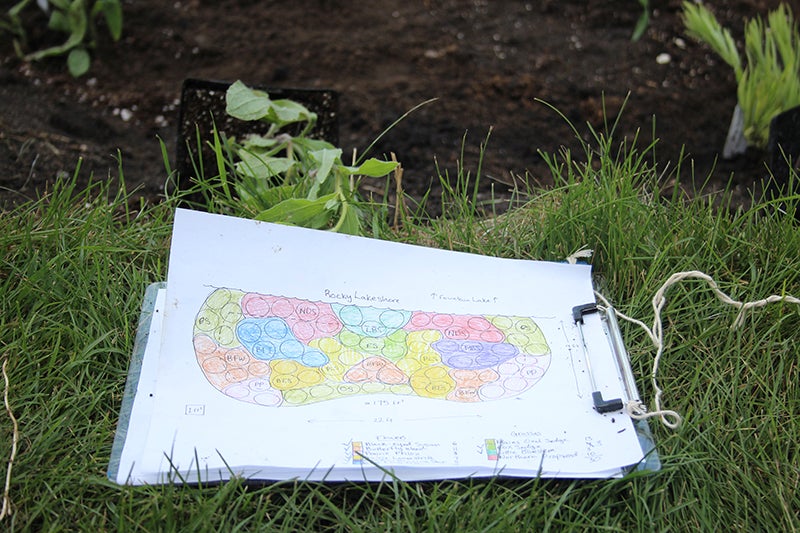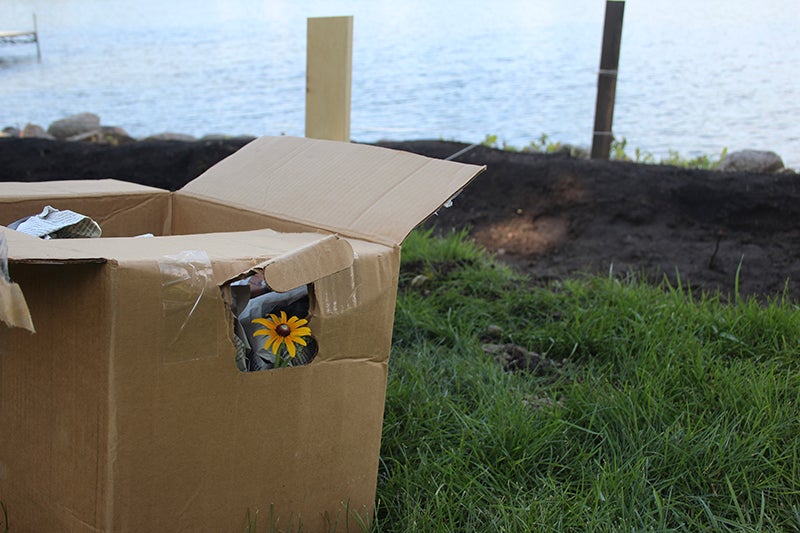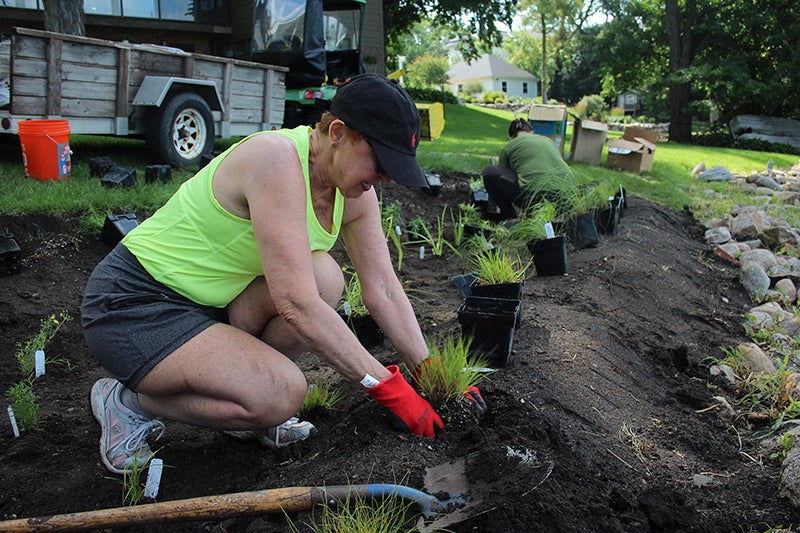Rain gardens popping up around Albert Lea as residents look to lower pollution impact on area lakes
Published 9:00 pm Monday, August 5, 2019
For one Albert Lea resident, Christmas came in July.
At least, that’s what Jean Eaton said it felt like as she unwrapped each plant from its newspaper swaddle and set it on the grass with its relatives.
During the last full week of July, Eaton worked with Minnesota GreenCorps member Claire Kretchman-Grande, who is working out of the Shell Rock River Watershed District through August, to install a rain garden in her backyard.
Rain gardens are gardens of native plants designed to catch water runoff and help it soak into the ground. The gardens can help combat pollution, replenish groundwater and reduce flooding, Kretchman-Grande said.
And while Eaton’s garden is on the lakefront, abutting the rocky shore to Fountain Lake at the bottom of her sloping backyard, those benefits are not limited to lakefront gardens, as storm drains throughout the city also lead to the lake.
Eaton said she is also looking forward to the birds and butterflies she expects the garden to attract.
Before installing a rain garden, Kretchman-Grande will do a soil infiltration test. To do so, she digs a hole in the ground and pours water in it to see how quickly the water will infiltrate. She said most places in Albert Lea have good soil — sandy or black, rather than clay-heavy soil.
Unless gardens are purposefully designed to include a pond, rain gardens are not designed to hold water, so Kretchman-Grande said mosquitos are not a concern.
“The whole point is all the water is gone within 24 hours,” Kretchman-Grande said.
According to a manual from the Wisconsin Department of Natural Resources and the University of Wisconsin Extension — one of several manuals and resources Kretchman-Grande has used to study up on rain garden installation — rain gardens should be installed at least 10 feet from a home to prevent water seeping into the foundation. They should also be located on a gentle slope to catch downspout water. Do not place rain gardens where water already pools, as pooling water is a sign of poor infiltration already. The garden’s longest side should be perpendicular to the slope’s direction to maximize the amount of water caught by the garden.
However, the rain garden itself should be level, with a berm built on the slope’s lower side. This allows the garden a chance to do its job — capture and infiltrate water — rather than letting it run past, Kretchman-Grande said. Therefore, plants in the basin of the rain garden should be comfortable with a water inundation, while plants on the sides and the berm should be more drought-tolerant.
Rain gardens will have different levels of effectiveness depending on how they are done, Kretchman-Grande said. Guidelines from the Wisconsin DNR and University of Wisconsin Extension ask homeowners to calculate the roof area of their homes to understand how much water runoff, and therefore drainage area, the garden will need to handle. However, homeowners without room or funds for a large rain garden can still control a majority of their runoff while downsizing the garden, the manual said.
Eaton’s garden was Kretchman-Grande’s third installation in Albert Lea.
Kretchman-Grande said she thinks awareness for rain gardens is picking up, at least in name recognition. She cited programs in the Twin Cities such as Blue Thumb, a Metro Blooms program, that holds classes on rain gardens and sees momentum from that.
Eaton is on the Lakes Foundation, where she met Kretchman-Grande. Eaton said she knew her yard, with its natural slope, had a decent amount of water flowing downhill. She uses fertilizer on her lawn, so she wanted the rain garden to act as a buffer for what eventually goes into the lake.
“I’ve seen them around town,” Eaton said. “I think they’re beautiful, and I wanted to have one in my yard to make my yard beautiful. And I think, off the lake, it’s going to be a stunning garden that Claire helped me design and implement.”
Barbara Clarey, whose backyard abuts Bancroft Bay, is also working with Kretchman-Grande on a rain garden. They are in the design phase of the process.
Clarey’s would-be rain garden is now a spray-paint outline just below her back patio. Her yard also slopes down to the water, and she, too, noticed the water moving off the house and patio and straight down the hill into the bay.
She was drawn as well to the self-sufficiency of the rain garden, she said. Kretchman-Grande said with native plants in place, the gardens should not need to be watered or weeded after taking a few years to establish themselves.
The Watershed District offers an incentive program to residents, offering a 75% reimbursement up to $2,500 as well as design and installation assistance.
Eaton estimated for her garden of over 70 plants, she spent around $600 on plants. On top of that, she also purchased mulch for the garden. Citizens pay the costs up-front and are reimbursed by the Watershed District after approval from the board.
Clarey will likely utilize the district’s cost-share incentive when she is able to start on her rain garden, Clarey said, as plants can be expensive to put in, especially in the numbers for an approximately 30-foot-wide rain garden.
Living on the lake, Clarey said she tries to do the best she can for it, she said. It is a homeowner’s responsibility to do the best they can, as well.
She remembers visiting Spring Lake — near Prior Lake — for the past 30 years. At first, it was unhealthy, but after the community worked to install rain gardens around it, she said she watched it transform.
“I’ve seen a place that went from essentially just a mud pit to a lake that is very vibrant,” she said.


